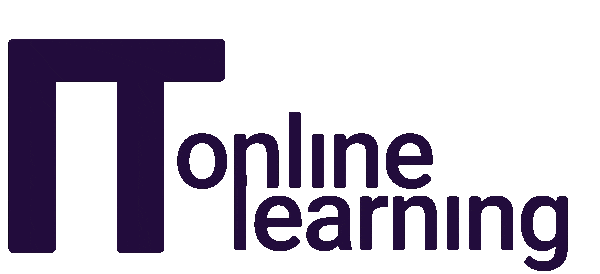What drive its need?
Advances in technology, globalisation, and trade liberalisation have changed the roles of state actors in today’s competitive business environment. Consumer lifestyles and preferences have become more convergent and country borders have opened up, so the competitive environment is more dynamic.
These forces produce intense competition among nations and firms, regardless of size and location. Due to the globalised and highly competitive nature of the world economy, any business or nation should strive to remain globally competitive.
Therefore, in order to achieve sustainable competitive advantage and superior performance, strategic capabilities should be developed using the appropriate strategies.
We explore why strategic management is essential in a globalised world and what forces make it necessary.
A global environment requires strategic management
There is a close relationship between strategy and strategic management. A strategy is an approach to helping organisations achieve long-term goals amidst competitive pressure, complexity and uncertainty.
Strategic management
Strategic management is a process of determining where a company is, how it got there, where it needs to be, and how it will get there, despite the limitations of resources and pressures of competition. As a result, it will need to analyse its past, present, and future; then formulate and execute a strategy to achieve sustainable competitive advantage and reach its goals.
The firm should use such a strategy to exploit its strengths and minimise its weaknesses in the global environment, in order to neutralise threats and exploit opportunities. This shows the importance of SWOT analysis: Strengths, Weaknesses, Opportunities and Threats. SWOT is a technique for assessing these four aspects of your business and using them to devise a successful strategy.
Formulating, implementing, and evaluating a strategy is the first stage of the strategic management process. It follows that strategy and management are intertwined. As such, the forces that drive the need for one also drive the need for the other in a global context. We now take a closer look at such forces.
Liberalisation of the market
It is almost universally accepted that market liberalisation enables the private sector to participate in economic activities, transforming the role of government in a mixed economy: governments no longer create significant amounts of goods and services. Market economies flourish when the government creates enabling environments (privatise most state enterprises) and when deregulation is implemented. This process is known as market liberalisation, which allows inward integration.
By definition, globalisation refers to the removal of barriers to trade across national borders to enable the integration of production processes, the flow of financial resources, technical innovation, knowledge, labour, cultures, goods and services among nations.
Globalisation and market liberalisation imply that national firms are less protected by international trade barriers, so that trade and competition can be free. As a result, firms have been forced to develop strategies that favour cost-lowering through exploitation of opportunities across borders.
In 2012, for example, the United States faced shrinking jobs because investors were “reallocating industries to developing countries with low wages” (Siddiqui, 2017). The government’s role, then, is to develop policies that will facilitate competition and discourage monopolies of firms in any sector, such as managing mergers and acquisitions. Due to the fact that countries still have different policies, firms need to develop strategies based on their specific countries within the global environment.
Growing economic trade blocs
Regional trade agreements have become more common to increase regional trade and competitiveness, and to create a free trade system (removing trade barriers) to facilitate regional economic growth. European countries have the European Union (EU); in North America, Canada and Mexico, there is the North American Free Trade Agreement (NAFTA); and East African countries have the East African Community.
A positive outcome from such regional trade agreements will, however, depend on the following: participating countries should have little or no political differences. Also, their fiscal and monetary policies should be coordinated. Firms should be able to access cross border value chains without being forced to do so, and they should undergo regulated transaction costs.
Consequently, regional and global markets are homogeneous, and businesses should have regional/global strategies. A convergence of state cultures, consumption styles, and preferences would result from the liberalisation of trade and the formation of trading blocs. Yet cultures remain heterogeneous, preventing such homogeneity within trading blocs. It is therefore extremely difficult for firms to create strategies that are designed to cater for the trade blocs in general while taking into account the differences between them.
Technological advances
Technologies such as the internet and social media are rapidly changing the way products and services are produced. Since change is rapid and unpredictable, and because the competitive environment is turbulent, it is hard to create value that offers a sustainable competitive advantage.
Business leaders and policymakers must, for example, monitor more than 60 technologies and philosophies currently impacting production systems (Kearney, 2017). As a result, firms need to constantly rethink their strategies and adapt them to the changing competitive environment. In the same way, technological advances have contributed to differences in income, economic growth, production costs, and international competitiveness among countries.
Therefore, organisations must adapt their business strategies to the needs of national business environments to successfully operate in a global environment. Technology is even needed for countries to compete effectively. In order to drive innovation, attain sustainable competitive advantage, and operate at a high level of performance, countries and firms need technological strategies.
Some companies see their technological advantages as unsustainable, or susceptible to imitation, and decide to adopt a licensing strategy to ensure that their innovation is adopted as soon as possible.
International integration of financial markets
International capital transactions have increased in recent years as a result of the deregulation and liberalisation of financial markets, as well as technological innovations that enable financial transactions across borders.
Integrating financial markets creates a complex and ever-changing competitive environment, making it challenging for managers to formulate strategies and make decisions.
Financial globalisation has been driven by rapid advances in technology (already discussed). While globalisation can enhance human prosperity and improve welfare, it can also create financial instability and currency crises. Therefore multinational companies are likely to face uncertainty and losses if currency crises do not favour them.
This points to the need for a national competitive strategy that considers the global environment. As a result, investors look at stock valuations on a global basis, especially when diversifying their stock portfolios to reduce risk and increase liquidity.
Convergence of consumer behaviour
Since bilateral trade and foreign direct investment have grown over decades, consumer behaviour (lifestyles and preferences) has converged, making the global marketplace seem homogenous. There may be convergence in consumer behaviour among certain countries, but not among all countries – there may be market convergence, but there is still cultural heterogeneity, which influences consumer behaviour.
For this reason, a company must not only analyse key market trends to develop a global marketing strategy, but also segment the market to tailor its competitive strategies appropriately and remain competitive. This shows the importance of both standardisation and adaptation of marketing strategies.
Economic development and modernisation
Competitiveness and modernisation of any given country increase with globalisation, trade liberalisation, and economic growth. A country’s level of development and governance model determine the type of competition policy it will formulate to foster economic development and global competitiveness.
As firms struggle to modernise processes to comply with new competition policies, the need for appropriate strategies increases. For companies to remain competitive in modern society, they must upgrade their databases and equipment, retrain their employees, reduce transaction costs, and take advantage of the market economy, mass consumption, and welfare state. In order to lower transaction costs, they need to choose resources efficiently, such as relocating production to countries with low minimum wages to reduce labour costs.
The Porter Diamond Theory of National Advantage shows the need for strategic management tools and frameworks to measure each nation’s competitiveness. The Porter Diamond is a model designed to help understand the competitive advantage that nations or groups have due to certain features available to them in order to improve a country’s position in a competitive economic global environment.
A SWOT analysis is conducted before, during, and after the implementation and evaluation of a strategic management process. Several factors in a global environment have led to the need for such a process, including: the liberalisation of markets, advances in technology, integration of the financial markets worldwide, consumer convergence, and economic growth.
Therefore, each nation and company, no matter how large or small, faces intense competition within the global environment. As a result, it is necessary to develop strategies that will allow competitive advantage and superior performance over the long run.





